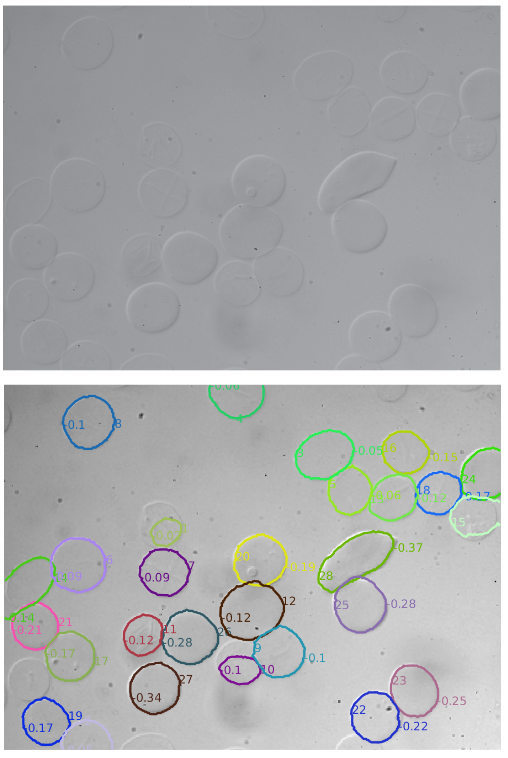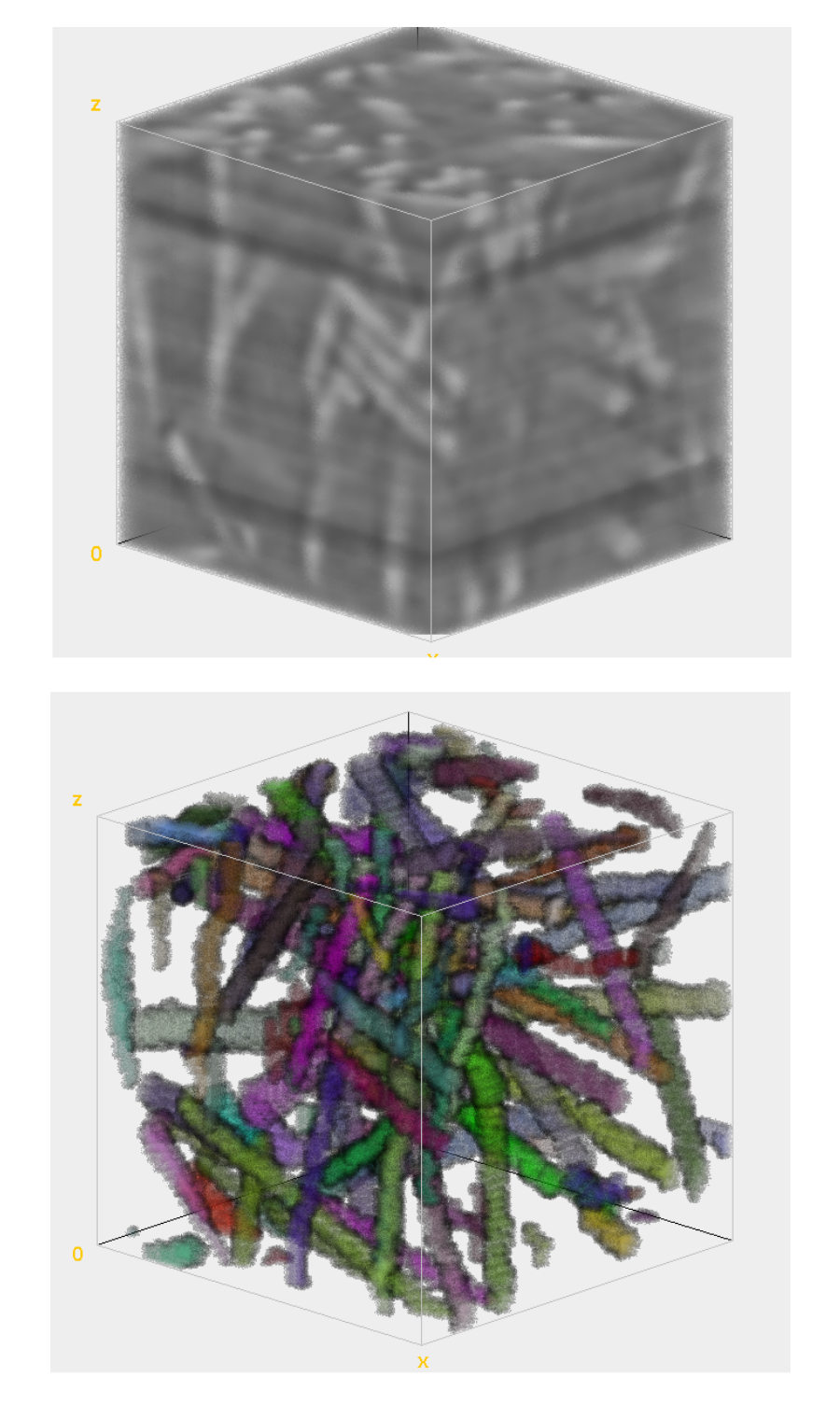Motivation for Characterizing Objects in Microscopy Images

Experiments developing novel materials require structural and mechanical characterization.
Structural characterization requires the extraction of information such number of objects and their lengths, orientations and intra-element interactions. These properties can directly affect the material's behavior and help to predict the material's response to external mechanical forces.
Detecting Irregularly-shaped Objects with Model-based Methods
Stochastic methods are useful approaches to segment and model materials since they are often based on physics and incorporate the materials real-world characteristics into the models.
In the first part of my thesis, I combined stochastic models with variational methods in order to simmulate, segment, and model systems of objects with irregularly shaped boundaries.
If you are interested in point processes combined with variational methods, you can look further into my PhD preliminary presentation slides.

Detecting 3D Objects with Deep Learning

Deep Learning approaches have gained popularity during the last decade. In fact, given enough training data, they normally outperform model-based approaches.
For the last part of my thesis, I used a novel deep-learning based instance segmentation approach to detect objects in 3D datasets. This approach consists in learning to cluster same-instance pixels and discriminate different-instance pixels.
If you are endeavouring into 3D instance segmentation, I highly encourage you to check my PhD thesis defense slides.